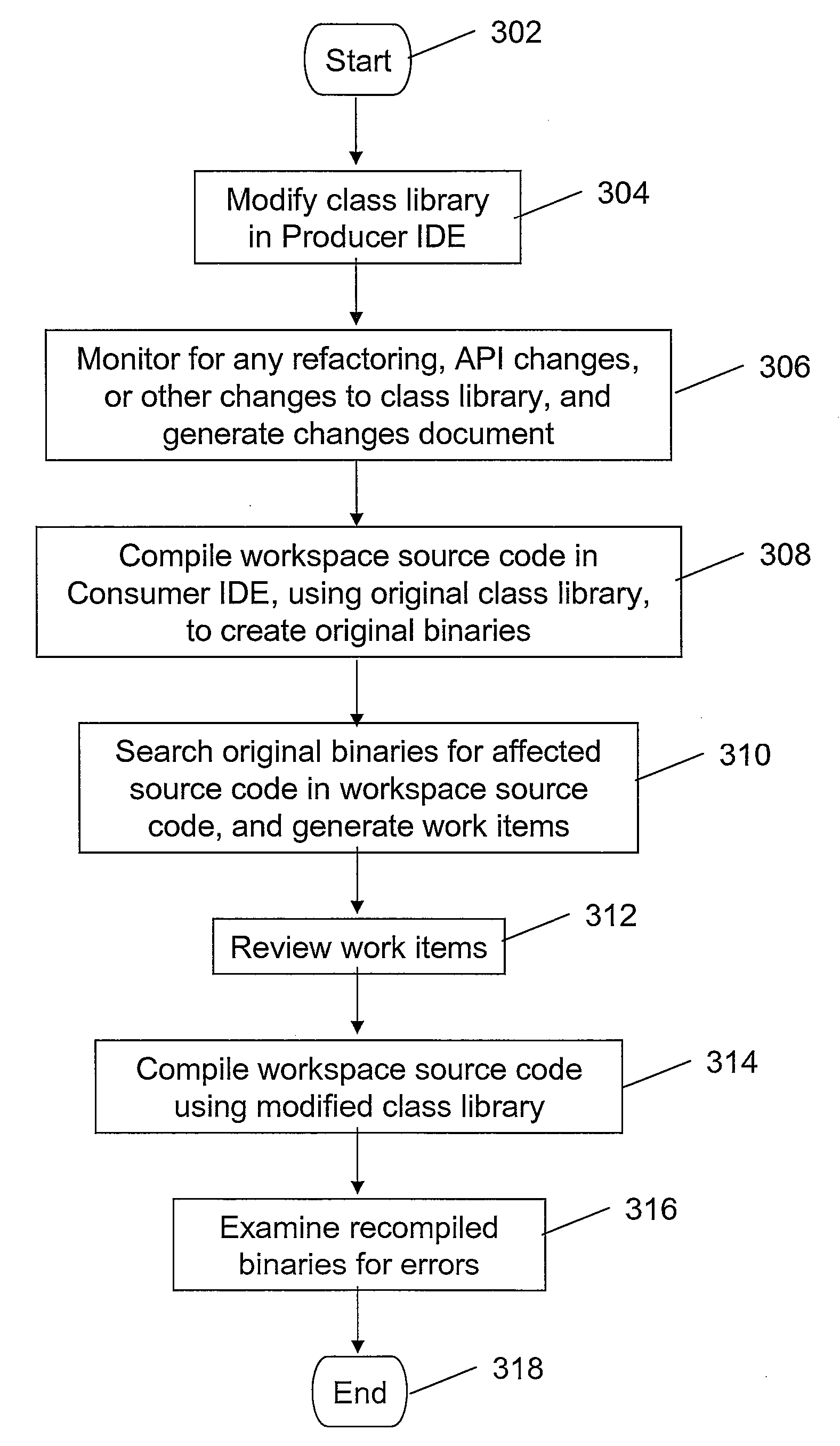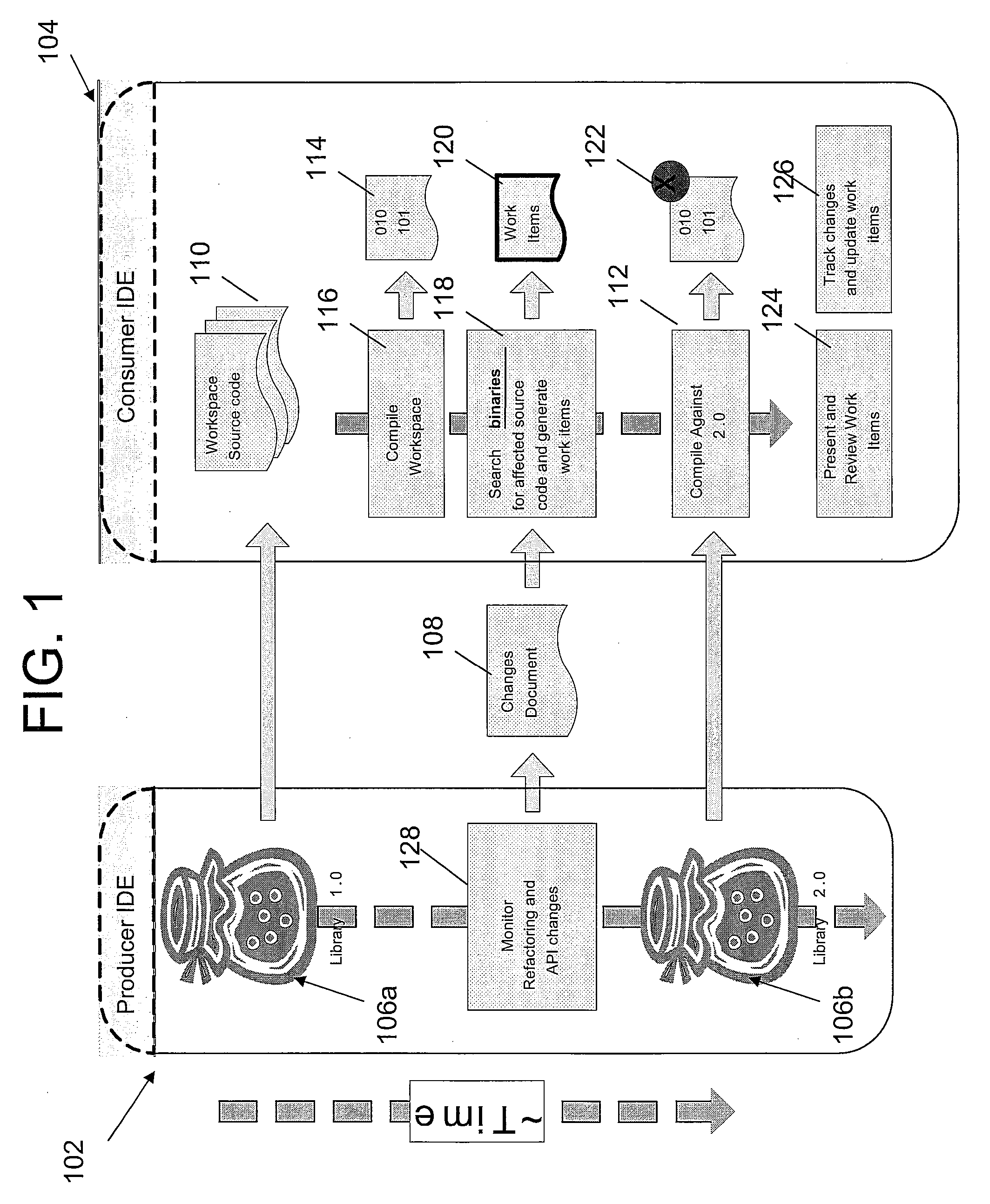Applying Deferred Refactoring and API Changes in an Ide
a technology of refactoring and api changes, applied in the computer field, can solve the problems of inability to compile user's code until, and the review process is not scalable,
- Summary
- Abstract
- Description
- Claims
- Application Information
AI Technical Summary
Benefits of technology
Problems solved by technology
Method used
Image
Examples
Embodiment Construction
[0014]With reference now to the figures, and in particular to FIG. 1, there is depicted a graph of a Producer Integrated Development Environment (IDE) 102 and Consumer IDE 104. Consumer IDE 104 is used by a developer who is consuming one or more libraries (e.g., a Java Archive—“JAR” in a Java environment) that have been created by a producer for use by developers (consumers). That is, Producer IDE 102 includes at least one original class library 106a, which is a library of classes (or alternatively, other software such as objects, routines, applets, etc.) which are available for use by developers using Consumer IDE 104. If and when (at a later time) the producer refactors (improves, updates, upgrades, etc.) the library file 106a (to generate a new version class library 106b), there may be changes to the Application Program Interfaces (APIs) associated with the files in the libraries 106.
[0015]As described above, libraries 106 are created by a producer (the supplier of the libraries ...
PUM
 Login to View More
Login to View More Abstract
Description
Claims
Application Information
 Login to View More
Login to View More - R&D
- Intellectual Property
- Life Sciences
- Materials
- Tech Scout
- Unparalleled Data Quality
- Higher Quality Content
- 60% Fewer Hallucinations
Browse by: Latest US Patents, China's latest patents, Technical Efficacy Thesaurus, Application Domain, Technology Topic, Popular Technical Reports.
© 2025 PatSnap. All rights reserved.Legal|Privacy policy|Modern Slavery Act Transparency Statement|Sitemap|About US| Contact US: help@patsnap.com



